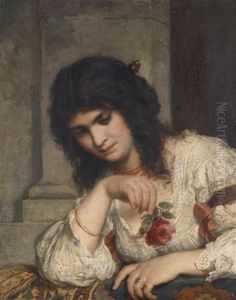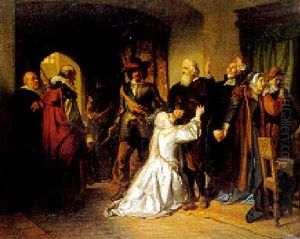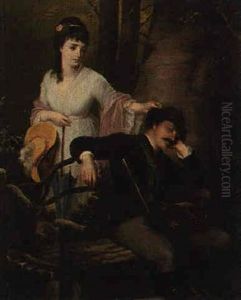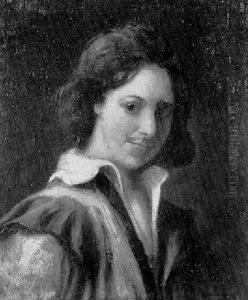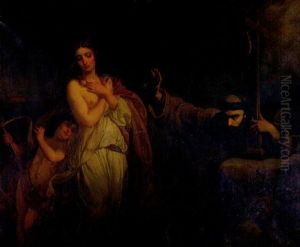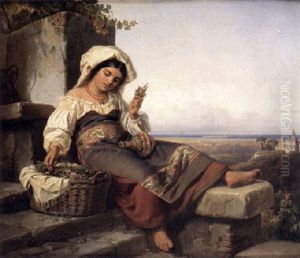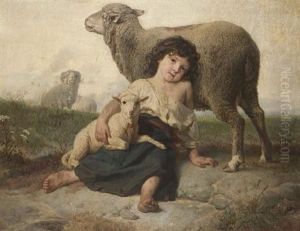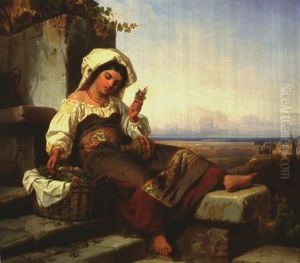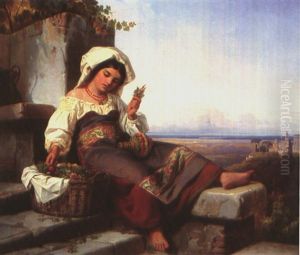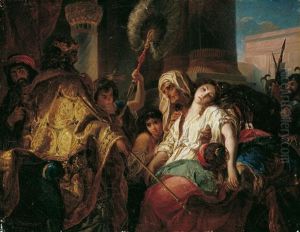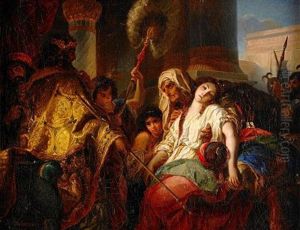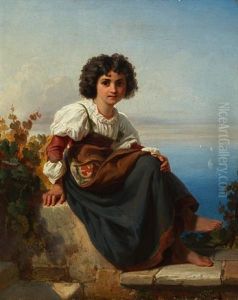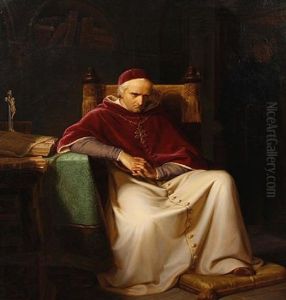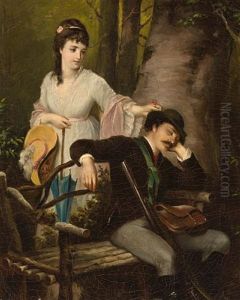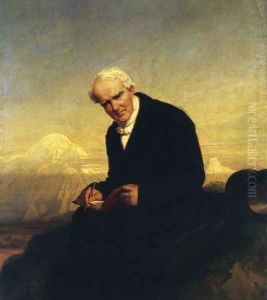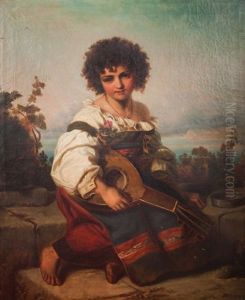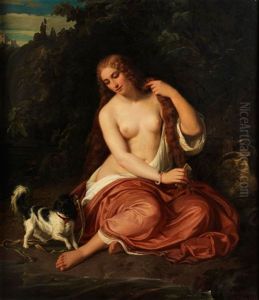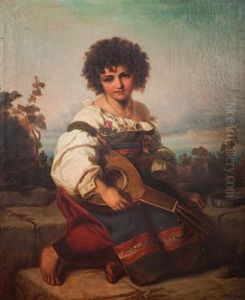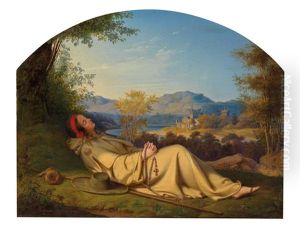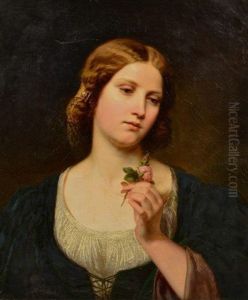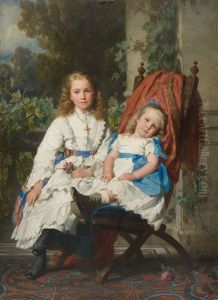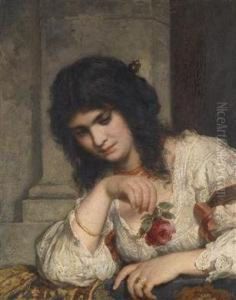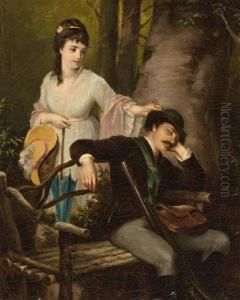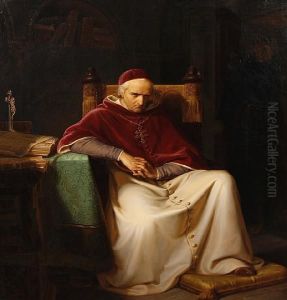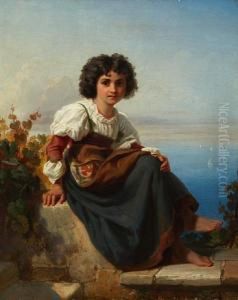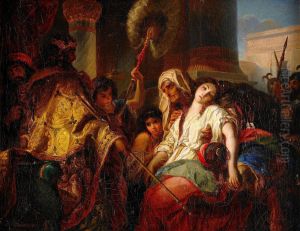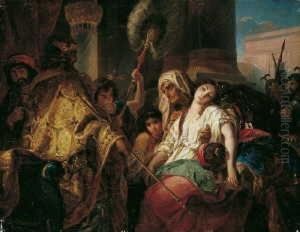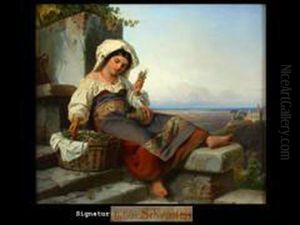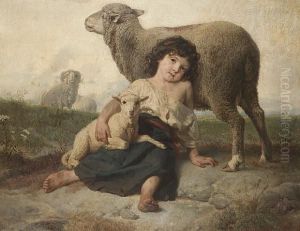Julius Friedrich Anton Schrader Paintings
Julius Friedrich Anton Schrader was a notable German painter born on March 28, 1815, in Berlin. He was primarily known for his historical paintings, portraits, and genre scenes which often reflected the romantic spirit of his time, influenced by the broader European Romantic movement. Schrader studied at the Prussian Academy of Arts in Berlin, where he honed his artistic skills under the tutelage of well-known figures like Wilhelm Wach and Karl Begas.
Schrader's work was deeply rooted in the academic art tradition, and he quickly became recognized for his ability to capture intricate historical details with a dramatic flair. His paintings often depicted scenes from mythology, the Bible, and historical events, characterized by vivid detail and a sense of grandeur. One of his most famous works is 'The Battle of Varus,' which showcases his talent for capturing the dynamic energy and emotion of historical battles.
Aside from his historical paintings, Schrader was also commissioned to create portraits for the Prussian court and other high-ranking officials, which contributed to his prestige within the artistic community. He became a professor at the Prussian Academy of Arts in 1855 and influenced a generation of artists with his teachings and his emphasis on the importance of historical accuracy and narrative in art.
Throughout his career, Schrader received numerous honors for his work, including awards at various art exhibitions and an appointment as a member of the Berlin Academy. His legacy is preserved in the collections of major museums and institutions, as well as in the body of work he left behind which continues to be of interest to art historians and collectors.
Julius Friedrich Anton Schrader died on December 13, 1900, in Berlin. His contributions to the art world during the 19th century have made him a significant figure in the history of German painting, particularly within the genre of historical and narrative art.
